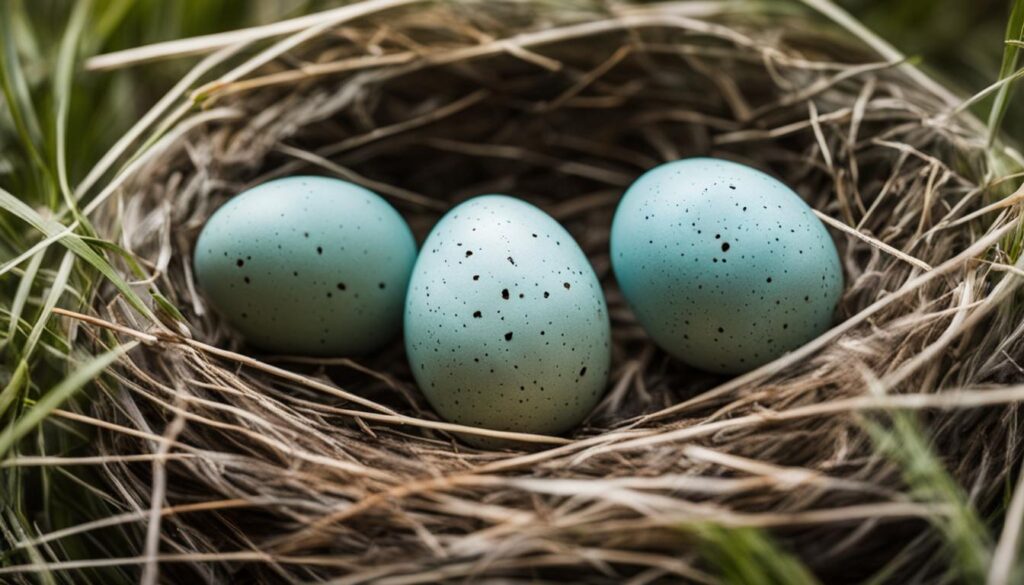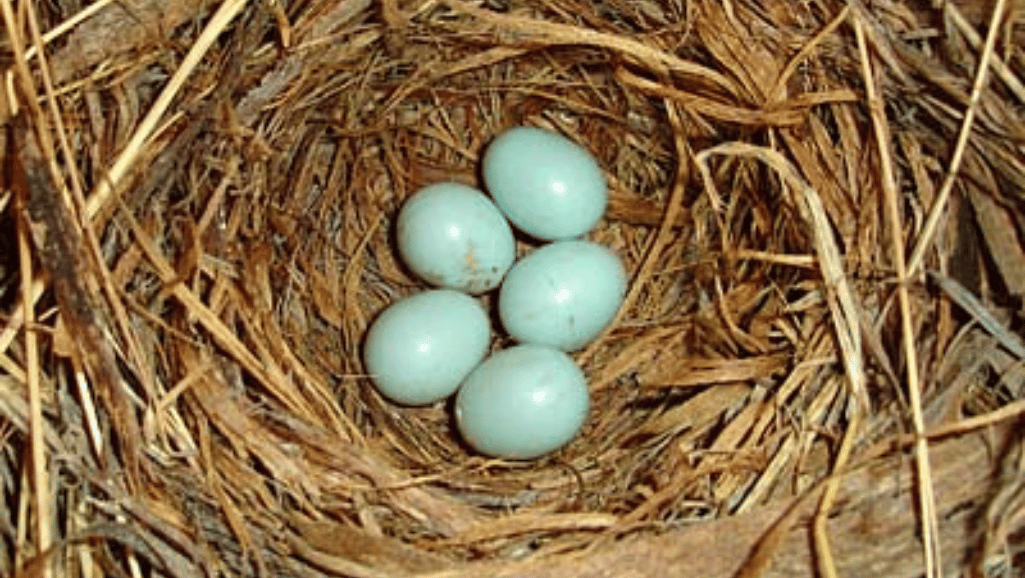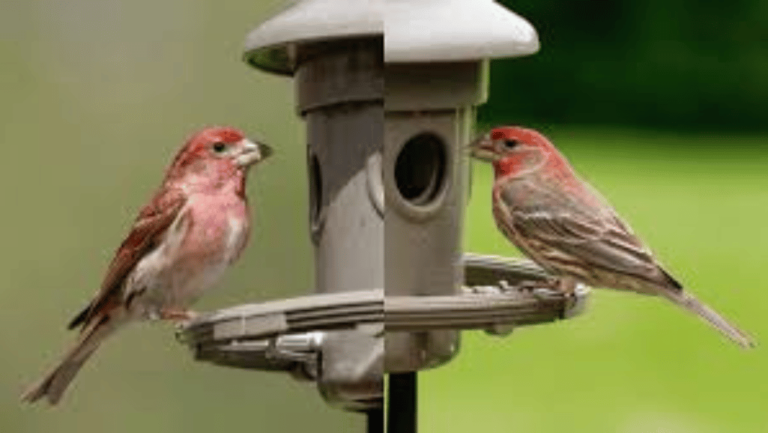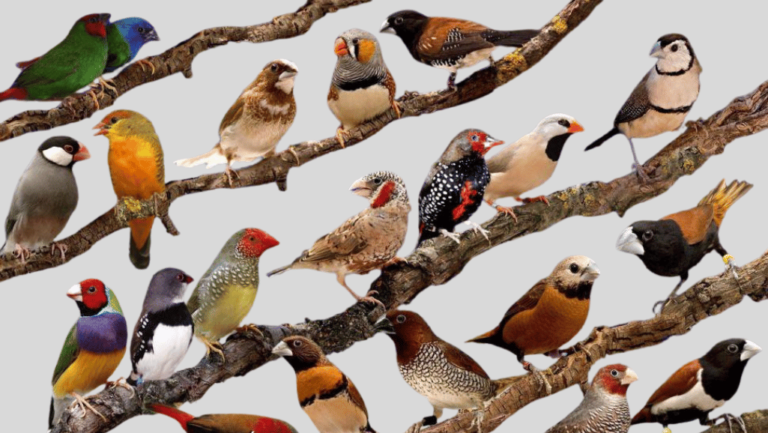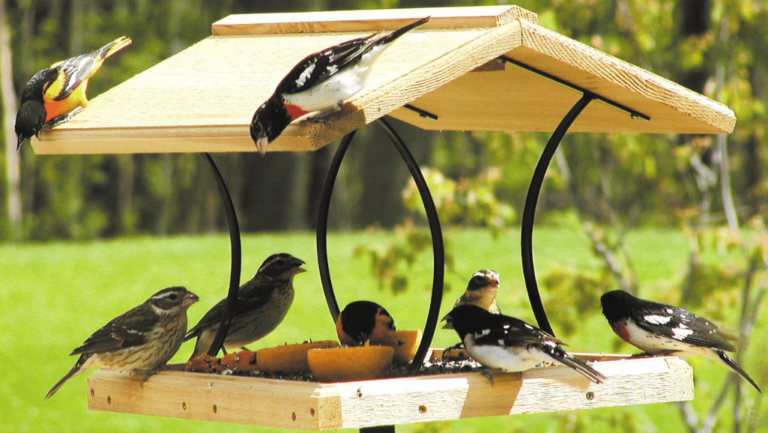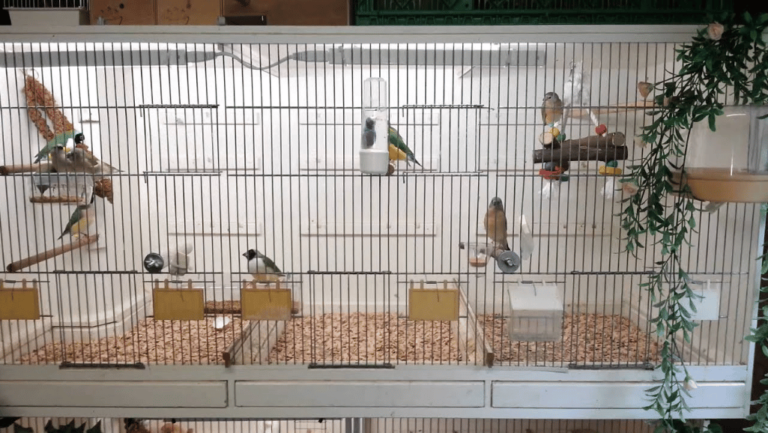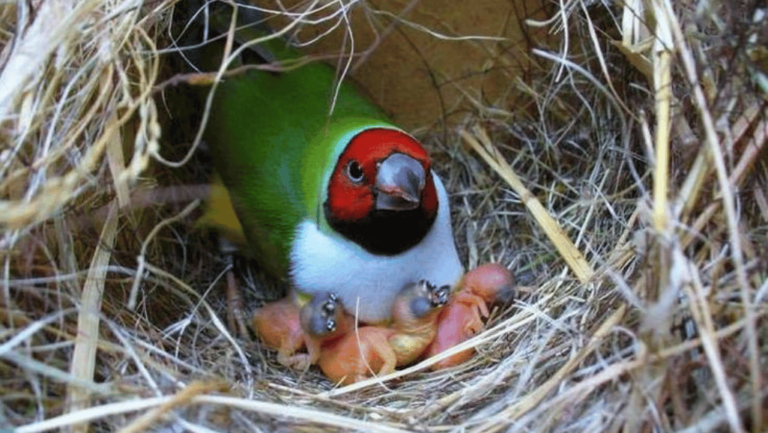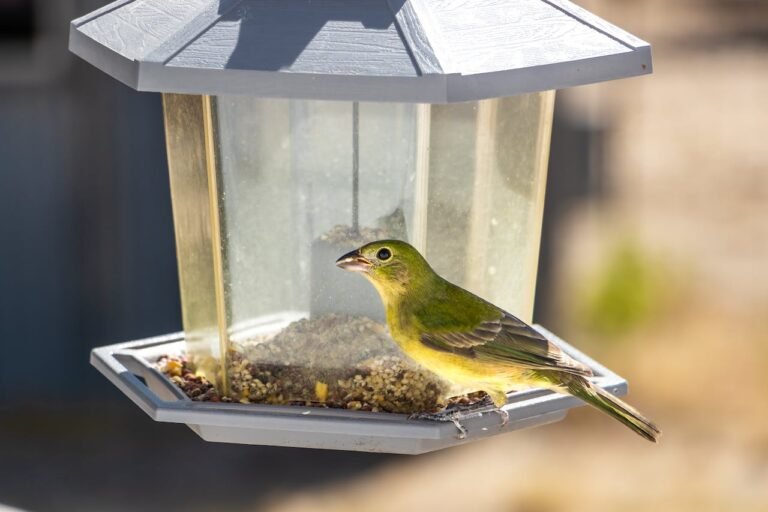Welcome to our comprehensive guide on caring for finch bird eggs and hatching them successfully. Whether you’re a bird enthusiast or have found an abandoned finch nest, understanding the intricacies of finch egg care and incubation is crucial for the well-being of these delicate creatures.
Finches can lay one egg per day, typically in the morning. A clutch can consist of three to six eggs, but the number can vary from as little as one to as many as nine. While the process of finch egg incubation is fascinating, there are several factors that can impede hatching, such as lack of fertilization, improper development, neglect from the hen, or external factors like the eggs falling from the nest.
One of the essential techniques in determining the fertility and development of finch eggs is candling. By shining a bright light on the eggs, you can ascertain their viability. Incubation begins after the third or fourth egg is laid, with both parents taking turns incubating the eggs. The eggs typically hatch after 12-16 days, depending on the species of finch.
Key Takeaways:
- Finches can lay up to six eggs per clutch, with the number varying between one and nine.
- Candling is a process of shining a bright light on the eggs to determine their fertility and development.
- Incubation of finch eggs begins after the third or fourth egg is laid, with both parents taking turns to incubate.
- The incubation period for finch eggs is around 12-16 days, depending on the species.
- Hatching finch eggs requires careful consideration, as it involves maintaining precise temperature, humidity, and regular egg turning.
Reasons for Finch Eggs Not Hatching
In the process of finch breeding and bird egg incubation, there are various factors that can contribute to finch eggs not hatching. Understanding these reasons can help finch owners or enthusiasts better manage and address potential issues to improve breeding success.
Lack of Fertilization
One common reason for finch eggs not hatching is unfertilized eggs. If there are no male finches present, the female finch can still lay eggs, but these eggs will not be fertilized and therefore will not develop into chicks.
Developmental Issues
Some finch eggs may fail to hatch due to developmental issues. This can occur if the egg is not properly fertilized or if there are genetic abnormalities. In these cases, the eggs may not develop fully, preventing successful hatching.
Neglect from the Hen
Inexperienced or young female finches may neglect their eggs, especially during their first batch. This lack of attention and care can result in eggs not hatching, as they may not receive the necessary warmth and incubation.
Eggs Falling from the Nest
Eggs that fall from the nest are at high risk of not hatching. These eggs may become damaged or exposed to environmental conditions that affect their viability. It’s essential to ensure that the nest is secure and well-positioned to prevent accidents.
Soft Shells Due to Calcium Deficiency
Finch eggs with soft shells, primarily caused by calcium deficiency in the hen’s diet, may fail to hatch. The shell’s integrity is crucial for protecting the developing embryo, and a weak shell can hinder the hatchability of the egg.
Stress from Overcrowding
Overcrowding in aviaries or birdhouses can create a stressful environment for finches, which can negatively impact their breeding success. Stress can lead to failed hatching, as birds may not have the necessary conditions or energy to incubate their eggs properly.
Understanding these various reasons for finch eggs not hatching can assist finch breeders in troubleshooting and taking appropriate measures to improve breeding outcomes. By addressing these factors and providing optimal conditions for incubation, breeders can increase the chances of successful finch egg hatching.
The Process of Candling Finch Eggs
One important method for examining the fertility and development of finch eggs is candling. Candling involves shining a bright light on the eggs to get a closer look inside. This technique can provide valuable insights into the progress and viability of the eggs.
It is recommended to only candle eggs under specific circumstances. If the parent birds are young or if an egg has been rejected by the hen, candling can help determine if the egg is still viable. However, it’s crucial to handle the eggs with care and wear gloves to avoid transferring any human scent onto the eggs, which could potentially disrupt the natural process.
During candling, certain characteristics indicate the fertility and development of the eggs. A healthy and fertile egg will show red veins, indicating that the embryo is developing inside the egg. On the other hand, a well-developed egg may reveal a faint outline of the developing chick when candled under the light. These signs indicate a promising chance of successful hatching.
However, if there are no visible red veins or a noticeable outline of the chick, it suggests that the egg is unlikely to hatch. This could be due to various reasons, such as infertility, poor development, or other complications. In such cases, it’s important to consider alternatives and focus on the eggs that show better signs of development.
Candling can provide valuable information about finch eggs, aiding in the decision-making process and ensuring the best chances for successful hatching. It is an effective tool for both experienced breeders and those encountering difficulties with finch egg incubation.
Incubation of Finch Eggs
Once finch eggs are laid, the next crucial step is the incubation process. Both the male and female finch play a role in incubating the eggs, ensuring their proper development and successful hatching.
Incubation usually begins after the third or fourth egg is laid, although some finch species may wait until all the eggs are laid. During incubation, the female finch takes the night duty, while the male takes over during the day, providing a balanced care routine for the eggs.
To maintain the ideal conditions for incubation, the parent finches periodically turn the eggs. This rotation helps distribute heat evenly and prevents the embryos from sticking to the inner shell. Additionally, turning the eggs helps control humidity levels, ensuring they stay within the necessary range for proper development.
The parent finches also play a unique role in maintaining humidity levels by taking a quick bath. They then return to the nest with damp feathers, contributing to the regulation of humidity in the incubation environment.
The incubation period for finch eggs typically ranges from 12 to 16 days, depending on the specific species. During this time, the embryos undergo crucial development, occupying themselves within the protective environment of the eggs until they are ready to break free.
Incubating finch eggs requires the dedication and cooperation of both parents, ensuring the best chances for successful hatching and the birth of healthy nestlings.
| Aspect of Incubation | Role of the Male Finch | Role of the Female Finch |
|---|---|---|
| Egg turning | Sits on the nest during the day and turns the eggs | Takes night duty and turns the eggs |
| Humidity control | Helps maintain humidity levels through damp feathers | Assists in controlling humidity levels through damp feathers |
| Incubation period | Shares incubation duties to ensure the eggs receive constant heat | Shares incubation duties to ensure the eggs receive constant heat |
Considerations for Hatching Finch Eggs
Hatching finch eggs can be a rewarding but challenging process. Proper care and attention are crucial to ensure successful hatching and the well-being of the nestlings. Here are some key considerations when hatching finch eggs:
1. Temperature and Humidity Control
Maintaining a constant temperature is essential for the embryos inside the finch eggs to develop properly. The ideal temperature for hatching finch eggs is around 100 degrees Fahrenheit. Fluctuations in temperature can negatively impact the hatch rate. It’s also important to maintain proper humidity levels to prevent the eggs from drying out.
2. Regular Egg Turning
Regular egg turning is crucial to prevent the embryos from sticking to the inner shell membrane and to ensure proper development. Gently turning the eggs two to three times a day will help evenly distribute heat and nutrients among the developing embryos, increasing the chances of successful hatching.
3. Specialized Equipment
Hatching finch eggs requires specific equipment to provide optimal conditions. An incubator with temperature and humidity controls is necessary to create a stable environment. Some incubators also feature automatic egg turning mechanisms, reducing the need for manual intervention. It’s crucial to research and invest in reliable equipment to increase the chances of successful hatching.
4. Viability of Eggs
Not all finch eggs may be viable for hatching. Some eggs may not be fertilized, while others may have developmental abnormalities. It’s important to perform candling on the eggs to assess their fertility and development. Candling involves shining a bright light through the shell to observe the embryo’s development and determine its viability.
5. Nestling Care and Feeding
Hatching finch eggs is just the beginning; caring for the nestlings requires a significant time commitment and understanding of their dietary needs. Finch nestlings typically require frequent feedings of a specialized finch formula supplemented with live insects and other suitable food sources. Providing proper nutrition and ensuring a clean and safe environment are essential for the nestlings’ well-being.
While hatching finch eggs can be a fulfilling experience, it’s important to understand the challenges involved and the commitment required. Due to the specialized care and equipment needed, successfully hatching finch eggs may be more feasible for experienced breeders and enthusiasts.
| Considerations for Hatching Finch Eggs |
|---|
| Temperature and Humidity Control |
| Regular Egg Turning |
| Specialized Equipment |
| Viability of Eggs |
| Nestling Care and Feeding |
Conclusion
Hatching finch eggs requires careful consideration and dedication. It is a complex process that is best left to the birds themselves. While it may be tempting to try to hatch abandoned eggs, it is important to respect the Migratory Bird Treaty Act and leave the eggs alone in most cases. Finch breeding and bird egg incubation are natural processes that have evolved over time, allowing birds to successfully reproduce and raise their young.
If you encounter abandoned eggs of rare or endangered species, it is crucial to seek guidance from professionals. Contact your local wildlife rehabilitator or fish and wildlife agency for expert advice on how to handle and care for abandoned eggs. These organizations have the necessary knowledge and resources to ensure the best possible outcome for the eggs and the welfare of the birds.
Remember, hatching finch eggs requires specialized equipment, constant monitoring of temperature and humidity, and a deep understanding of the needs and behaviors of these birds. It is not a task to be taken lightly, and success rates can vary even under optimal conditions. While it can be a rewarding experience, it is important to approach finch breeding and hatching with realistic expectations and a commitment to the well-being of these delicate creatures.
Frequently Asked Questions
How many eggs do finches lay?
Finches can lay one egg per day, typically in the morning. A clutch can consist of three to six eggs, but there can be as few as one or as many as nine.
Why may finch eggs not hatch?
There are several reasons why finch eggs may not hatch, including lack of fertilization, improper development, neglect from the hen, or external factors such as falling from the nest.
What is candling and why is it done?
Candling is a process of shining a bright light on an egg to determine its fertility and development. It is done to assess the viability of the egg and monitor its progress.
Who incubates finch eggs?
Finch eggs are typically incubated by both parents, with the female taking night duty and the male sitting during the day.
How long does it take for finch eggs to hatch?
The incubation period for finch eggs is around 12-16 days, depending on the species.
Can I hatch finch eggs at home?
Hatching finch eggs can be a challenging process that requires specialized equipment to maintain proper temperature and humidity levels. It is not recommended for most people.
What should I do if I find abandoned finch eggs?
It is important to respect the Migratory Bird Treaty Act and leave the eggs alone. If you encounter abandoned eggs of rare or endangered species, contact your local wildlife rehabilitator or fish and wildlife agency for guidance.



